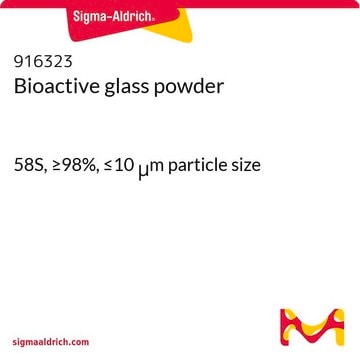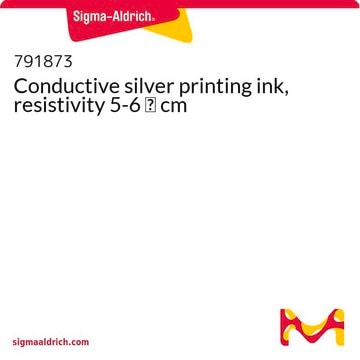915580
Bioactive glass
powder, S53P4, ≥98%, 50-250 μm particle size
Synonim(y):
Bioglass ceramics, Silica glass
Zaloguj sięWyświetlanie cen organizacyjnych i kontraktowych
About This Item
Wzór liniowy:
CaO:SiO2:P2O5
Kod UNSPSC:
12352103
NACRES:
NA.23
Polecane produkty
Zastosowanie
Bioactive glass is able to form a hydroxyapatite-like surface layer thus providing a stable bond to bone cells. In addition, bioactive glass has been shown to stimulate bone cells regeneration. Due to its biocompatability and osteogenic capacity applications include tissue engineering, enamel reconstruction, bio-coatings, and high temperature adhesives. Furthermore, S53P4 has displayed antimicrobial activity.
This page may contain text that has been machine translated.
Hasło ostrzegawcze
Danger
Zwroty wskazujące rodzaj zagrożenia
Zwroty wskazujące środki ostrożności
Klasyfikacja zagrożeń
Eye Dam. 1 - Skin Corr. 1B - STOT RE 2 Inhalation - STOT SE 3
Organy docelowe
Lungs, Respiratory system
Kod klasy składowania
8A - Combustible corrosive hazardous materials
Klasa zagrożenia wodnego (WGK)
WGK 3
Certyfikaty analizy (CoA)
Poszukaj Certyfikaty analizy (CoA), wpisując numer partii/serii produktów. Numery serii i partii można znaleźć na etykiecie produktu po słowach „seria” lub „partia”.
Masz już ten produkt?
Dokumenty związane z niedawno zakupionymi produktami zostały zamieszczone w Bibliotece dokumentów.
Lorenzo Drago et al.
Materials (Basel, Switzerland), 11(2) (2018-03-03)
Bone defects caused by trauma or pathological events are major clinical and socioeconomic burdens. Thus, the efforts of regenerative medicine have been focused on the development of non-biodegradable materials resembling bone features. Consequently, the use of bioactive glass as a
Francesco Baino et al.
Journal of functional biomaterials, 9(1) (2018-03-23)
Bioactive glasses caused a revolution in healthcare and paved the way for modern biomaterial-driven regenerative medicine. The first 45S5 glass composition, invented by Larry Hench fifty years ago, was able to bond to living bone and to stimulate osteogenesis through
Julian R Jones
Acta biomaterialia, 9(1), 4457-4486 (2012-08-28)
Bioactive glasses are reported to be able to stimulate more bone regeneration than other bioactive ceramics but they lag behind other bioactive ceramics in terms of commercial success. Bioactive glass has not yet reached its potential but research activity is
Nasz zespół naukowców ma doświadczenie we wszystkich obszarach badań, w tym w naukach przyrodniczych, materiałoznawstwie, syntezie chemicznej, chromatografii, analityce i wielu innych dziedzinach.
Skontaktuj się z zespołem ds. pomocy technicznej










